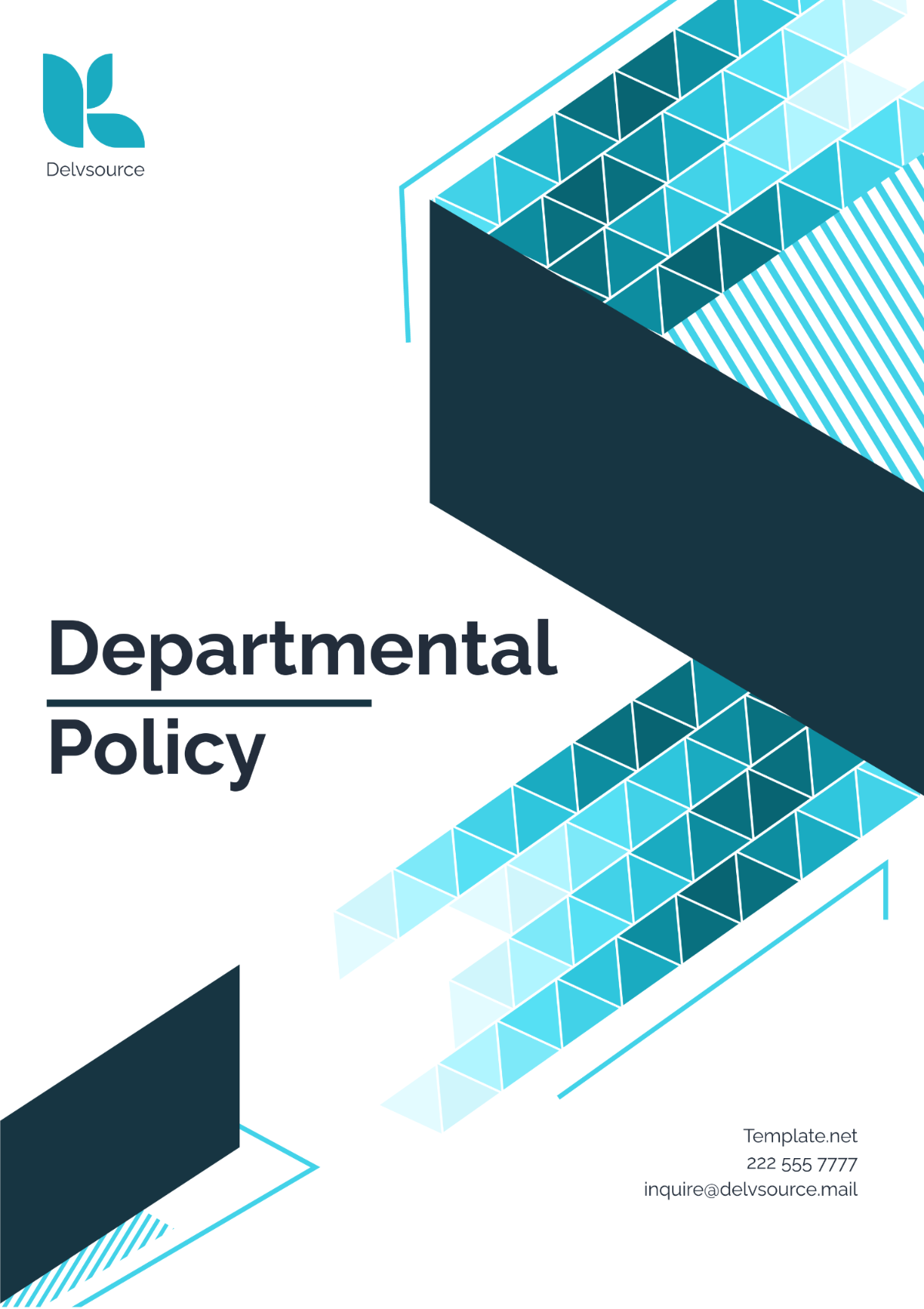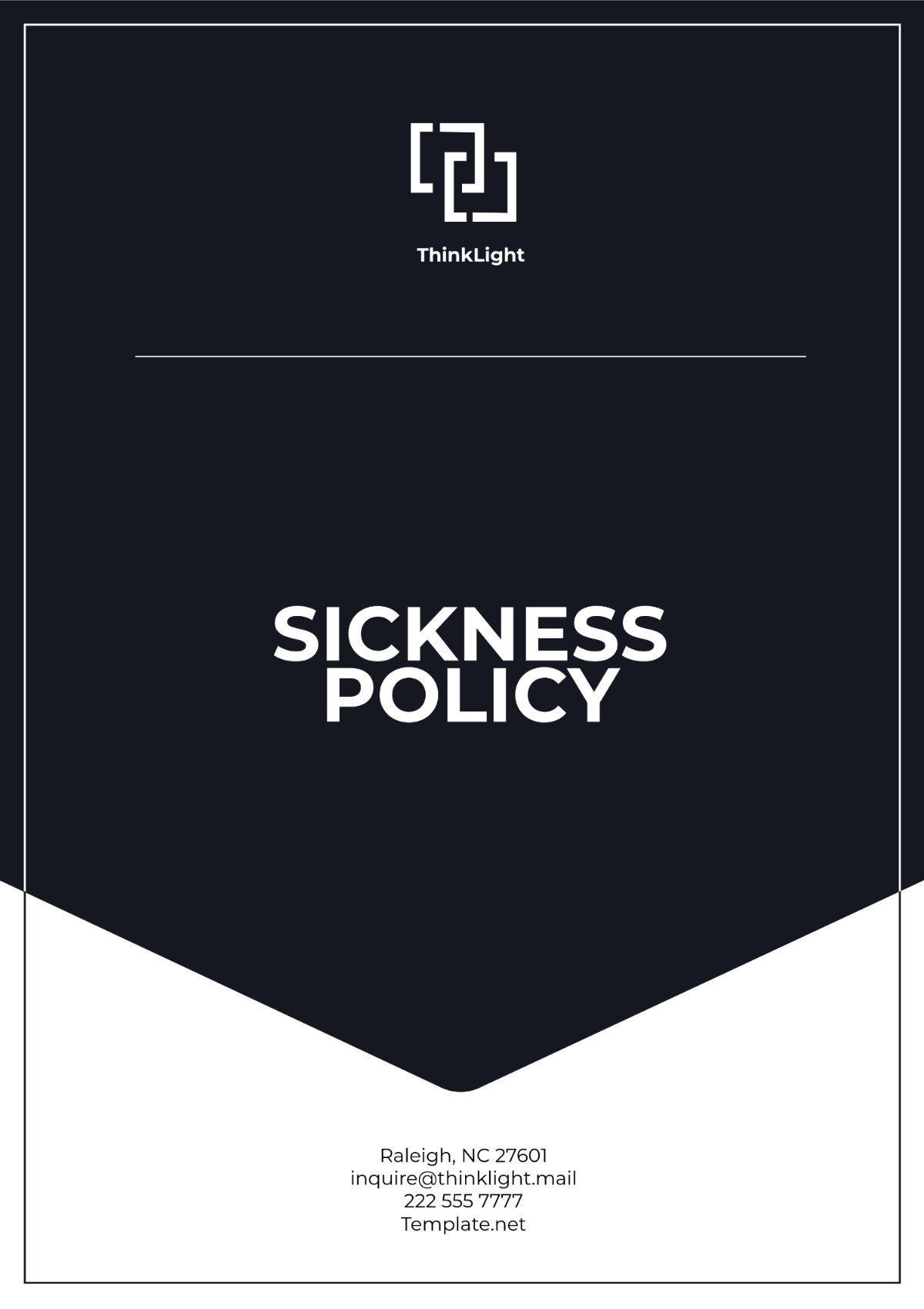Agriculture Sales Policy & Procedure
I. Introduction
This document outlines the Agriculture Sales Policy & Procedure for [Your Company Name], designed to establish a consistent and effective approach to managing sales in the agriculture sector. The primary objective of this policy is to streamline sales operations, ensuring that all sales activities are conducted in a manner that aligns with industry best practices and complies with relevant US laws and regulations. By standardizing our sales processes, we aim to improve the efficiency of our operations, reduce errors, and provide a clear framework for all sales-related activities.
The policy serves as a comprehensive guide for our sales team, offering detailed procedures for each stage of the sales cycle—from order placement and processing to delivery and customer service. It addresses critical aspects of the sales process, including pricing, payment terms, and return policies, and sets clear expectations for sales practices and ethical behavior. Our goal is to enhance the effectiveness of our sales efforts, ensuring that our team delivers high-quality service to our customers while meeting organizational targets.
In addition, this policy provides a structured approach for ongoing training and development, performance monitoring, and policy review. It reflects our commitment to upholding the highest standards of professionalism and customer satisfaction, contributing to the long-term success of [Your Company Name] in the competitive agriculture market.
II. Scope
This procedure is applicable to all employees involved in the sales process at [Your Company Name], including sales representatives, sales managers, and support staff. It encompasses every individual who plays a role in managing customer interactions, processing orders, and ensuring the successful delivery of products. By defining the scope of this policy, we establish clear guidelines and expectations for all team members to follow in their respective roles.
The policy applies to all aspects of the sales cycle, from initial customer inquiries to post-sale support. It ensures that everyone at [Your Company Name] adheres to the same standards of conduct and operational procedures, thereby promoting consistency and efficiency in our sales operations. All employees are expected to familiarize themselves with these procedures to effectively contribute to our sales goals and uphold our commitment to customer satisfaction.
III. Objective
The objective of this policy is to establish a framework that guides all sales activities at [Your Company Name]. By setting clear guidelines and procedures, this policy aims to streamline the sales process and ensure that every team member understands their roles and responsibilities. Our approach is designed to foster a structured and consistent sales environment that supports both our operational goals and our commitment to excellent customer service.
The specific objectives of this policy are to:
Ensure clarity in the sales process.
Enhance customer satisfaction through structured sales practices.
Increase sales volume and profitability.
Maintain compliance with industry regulations.
IV. Definitions
In this section, we define key terms used throughout the Agriculture Sales Policy & Procedure to ensure a clear and consistent understanding of our sales practices and responsibilities. These definitions establish a common language for all employees involved in the sales process, helping to avoid misunderstandings and ensure that everyone is on the same page. A precise understanding of these terms is crucial for effectively implementing the policies and procedures outlined in this document.
Here are the essential terms defined for clarity:
Customer: Any individual or organization that purchases agriculture products from [Your Company Name].
Sales Representative: An employee responsible for direct interaction with customers to sell products.
Sales Manager: An employee responsible for overseeing sales strategies and performance.
Order: A formal request from a customer to purchase agriculture products from [Your Company Name].
Payment Terms: The conditions under which payment for products is to be made, including timing and methods.
Return Policy: The guidelines and procedures for returning products to [Your Company Name], including conditions and timeframes.
Delivery: The process of transporting products from [Your Company Name] to the customer’s location.
Discount: A reduction in the price of products offered to customers under specific conditions.
Fulfillment: The process of preparing and delivering products to meet customer orders.
Conflict of Interest: A situation where personal interests may interfere with professional responsibilities and decision-making.
Regulatory Compliance: Adherence to federal, state, and local laws and regulations governing the sale of agricultural products.
V. Procedures
To ensure the effective management of sales activities at [Your Company Name], it is essential to follow a structured approach throughout the entire sales process. This section outlines the step-by-step procedures for managing customer interactions, from initial contact to post-sale follow-up. Each step is designed to ensure that all sales activities are conducted efficiently, meet customer expectations, and align with company objectives.
By adhering to these procedures, employees will maintain consistency in their sales efforts, improve customer satisfaction, and contribute to achieving sales targets. The following steps provide a comprehensive guide for managing each stage of the sales process:
Step 1: Customer Identification and Qualification
Identify potential customers through market research and referrals.
Qualify potential customers based on their purchasing power and needs.
Document customer details and qualification status in the CRM system.
Step 2: Product Presentation
Understand the customer's requirements and present suitable products.
Use visual aids, samples, and demonstrations to showcase product benefits.
Provide detailed information about product features, pricing, and availability.
Step 3: Negotiation and Closing
Discuss terms and negotiate pricing, delivery schedules, and payment options.
Address any customer objections or concerns professionally.
Finalize the sales agreement and get it signed by the customer.
Step 4: Order Processing
Input the order details into the sales management system.
Ensure stock availability and arrange for product delivery.
Send order confirmations and invoices to the customer.
Step 5: Post-Sale Follow-Up
Contact the customer to confirm the receipt of the order and satisfaction with the product.
Address any post-sale issues or concerns promptly.
Keep the customer informed about new products, promotions, and updates.
V. Compliance
All sales representatives and managers at [Your Company Name] are required to strictly adhere to the procedures outlined in this policy to ensure compliance with both company standards and industry regulations. This adherence is essential for maintaining the integrity of our sales operations, upholding the quality of our customer interactions, and ensuring that all legal and regulatory requirements are met. Each team member must follow the established procedures for customer identification, product presentation, negotiation, order processing, and post-sale follow-up, as detailed in the preceding sections. Compliance with these procedures helps to achieve consistent, high-quality service and supports our company’s commitment to ethical practices and customer satisfaction.
Any deviations from the prescribed procedures must be reported immediately to the Sales Manager and documented appropriately. This includes any instances where procedures cannot be followed due to exceptional circumstances or where there are concerns about the adequacy of the procedures themselves. Reporting deviations ensures that issues are addressed in a timely manner and that corrective actions are implemented to prevent future occurrences. All reports will be reviewed, and necessary adjustments will be made to maintain compliance and improve our sales processes. Adherence to these compliance measures is critical for the success and sustainability of our sales efforts at [Your Company Name].
VI. Documentation
Accurate and comprehensive documentation is a critical component of the sales process at [Your Company Name]. This section outlines the procedures for recording, storing, and managing all sales-related documentation to ensure that records are reliable, accessible, and compliant with company policies and industry regulations.
Record-Keeping Requirements
All sales representatives and managers are responsible for maintaining accurate records of their sales activities, customer interactions, and transactions. This includes detailed documentation of customer inquiries, product presentations, negotiations, order details, payment information, and post-sale follow-ups. Records should include:
Customer Information: Names, contact details, and any relevant background information.
Sales Activities: Notes from meetings, phone calls, and email communications.
Transaction Records: Orders placed, products sold, prices, and payment terms.
Delivery Information: Shipping details, delivery dates, and confirmation receipts.
Post-Sale Records: Customer feedback, issue resolutions, and follow-up activities.
Storage and Access
All documentation must be stored securely to protect sensitive information and maintain data integrity. This can include physical storage in locked files or digital storage in a secure, company-approved Customer Relationship Management (CRM) system or document management system. Access to documentation should be restricted to authorized personnel only, based on their roles and responsibilities. Regular audits should be conducted to ensure that records are complete, accurate, and up-to-date.
Review and Retention
Documentation should be readily accessible for review by authorized personnel, including during audits or for performance evaluations. Records should be retained for a minimum period as required by legal regulations and company policy, after which they may be archived or securely disposed of. Retention periods and archiving procedures should be reviewed periodically to ensure compliance with legal requirements and best practices.
By following these documentation procedures, [Your Company Name] ensures that all sales activities are properly recorded and that information is available for review and analysis to support operational effectiveness and regulatory compliance.
VII. Review and Amendments
The effectiveness and relevance of this Agriculture Sales Policy & Procedure will be reviewed on an annual basis to ensure it continues to meet the needs of [Your Company Name] and aligns with current industry standards and regulatory requirements. This review will involve a comprehensive evaluation of the procedures, assessing their impact on sales performance, customer satisfaction, and compliance with legal obligations. Feedback from employees, performance metrics, and changes in the regulatory environment will be considered during this review process.
Any necessary amendments to the policy will be proposed by the Sales Manager and submitted for approval to senior management. Once approved, these amendments will be communicated to all affected employees through official channels, such as team meetings, email updates, or internal memos. Employees are expected to review and understand any changes to ensure continued adherence to updated procedures. This ongoing review process ensures that the policy remains effective, up-to-date, and supportive of [Your Company Name]’s goals and compliance obligations.
VIII. Contact Information
For any queries or further clarification regarding the Agriculture Sales Policy & Procedure, please contact:
[Your Name]
[Title]
[Your Company Name]
[Contact Information]

















































